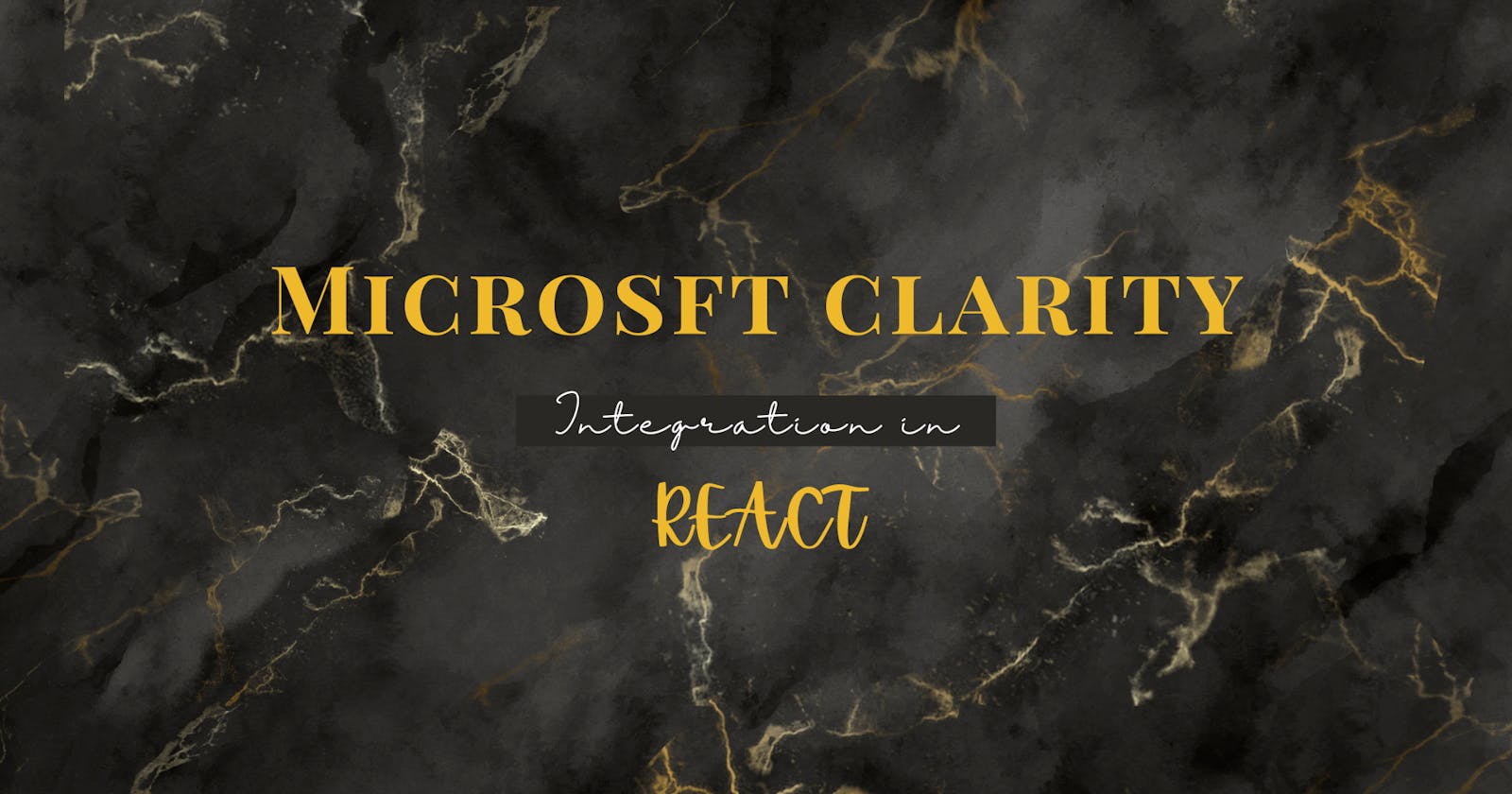Seamlessly Integrating Microsoft Clarity in React Application
Empower Your React Applications with Microsoft Clarity's Data-Driven Insights
Introduction
Noah Kagan's insightful words resonate deeply in the realm of product design: 'The key to great product design is to create something that people actually enjoy using.' In today's dynamic landscape, the data we generate has evolved into a pivotal resource for refining technologies and shaping informed decisions that drive businesses forward. At the forefront of this transformative process stands Microsoft Clarity – a potent tool empowering teams to meticulously monitor, refine, and amplify user experiences. With instant heatmaps, session recordings that respect data privacy, and a wealth of powerful insights, Microsoft Clarity has emerged as a lighthouse guiding modern businesses toward excellence.
In this write-up, we embark on a journey to seamlessly integrate Microsoft Clarity into React applications (note that this implementation is equally applicable to micro-frontend applications). We will navigate a carefully curated step-by-step process, ensuring the smooth integration and effective utilization of this powerful tool.
Implementation Process
1. Microsoft Clarity Project Creation and Token Retrieval
Begin by creating a dedicated project within the Microsoft Clarity platform. Retrieve the unique project token from the project settings. This token is a crucial identifier for associating the data generated with our project.
2. Environment Variable Configuration
Upon obtaining the Microsoft Clarity project token, store it as a local environment variable within the development environment. This practice enhances security and facilitates easy access during integration. Add the token as a key-value pair in your preferred local environment configuration file, such as '.env' to achieve this.
Afterwards, integrate the Microsoft Clarity project token into your CI/CD workflow, whether you're using GitLab, GitHub, Netlify, or any other platform of your choice.
3. Integration of react-microsoft-clarity
For seamless integration into our React-based applications, we rely on the react-microsoft-clarity library. This library offers an array of methods that align with the React paradigm. Execute the following commands to integrate the library into our environment:
Using npm:
npm install react-microsoft-clarity
Using yarn:
yarn add react-microsoft-clarity
4. Initializing Microsoft Clarity
In the core component of your application (typically App.js), initialize Microsoft Clarity. Import the necessary components and initialize Clarity with the project token:
import { clarity } from 'react-microsoft-clarity';
clarity.init(projectToken);
5. User Identification and Session Tracking
To facilitate accurate user session tracking, it is imperative to pass user identification to Microsoft Clarity. This ensures that each user's interactions can be precisely analyzed. Before identification, confirm Clarity's initiation:
if (clarity.hasStarted) { clarity.identify('USER_ID', { userName }); }
6. Observing Live Recordings
With the successful integration of Microsoft Clarity, you can now access and observe live user session recordings. This advanced feature helps us gain firsthand insights into user interactions, helping us refine our platform and user experience.
Conclusion
In a nutshell, our data-driven era demands a shift from creation to comprehension, from guessing to knowing. And championing this shift is Microsoft Clarity – a robust ally that enables us to not just observe user experiences but truly understand and elevate them.
Microsoft Clarity's array of tools, from real-time heatmaps to thoughtful session recordings, redefines the way we craft digital journeys. Beyond the features, it's about connecting with users on a profound level, uncovering the unspoken needs that drive engagement.
In this article, we've navigated the integration of Microsoft Clarity into your React applications, offering you a blueprint to bridge the gap between data and experience. As you embark on this journey, remember that it's not just about the tools; it's about the pursuit of excellence in user-driven software engineering.
